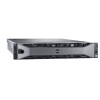Dell PowerVault DR6000 Owners Manual - Page 104
Environmental, Relative Humidity, Maximum Vibration, Maximum Shock, Maximum Altitude
 |
View all Dell PowerVault DR6000 manuals
Add to My Manuals
Save this manual to your list of manuals |
Page 104 highlights
Environmental Temperature Ranges (for altitude less than 950 m 10 °C to 35 °C (50 °F to 95 °F) with no direct or 3117 ft) sunlight on the equipment. Humidity Percentage Range 10% to 80% Relative Humidity with 26 °C (78.8 °F) maximum dew point. Relative Humidity Storage 5% to 95% RH with 33 °C (91 °F) maximum dew point. Atmosphere must be non-condensing at all times. Maximum Vibration Operating 0.26 Grms at 5 Hz to 350 Hz (all operation orientations). Storage 1.87 Grms at 10 Hz to 500 Hz for 15 min (all six sides tested). Maximum Shock Operating One shock pulse in the positive z axis of 31 G for 2.6 ms in all operational orientations. Storage Six consecutively executed shock pulses in the positive and negative x, y, and z axes (one pulse on each side of the system) of 71 G for up to 2 ms. Maximum Altitude Operating 3048 m (10,000 ft). Storage 12,000 m (39,370 ft). Operating Altitude De-rating Up to 35 °C (95 °F) Maximum temperature is reduced by 1 °C/300 m (1 °F/547 ft) above 950 m (3,117 ft). 35 °C to 40 °C (95 °F to 104 °F) Maximum temperature is reduced by 1 °C/175 m (1 °F/319 ft) above 950 m (3,117 ft). 40 °C to 45 °C (104 °F to 113 °F) Maximum temperature is reduced by 1 °C/125 m (1 °F/228 ft) above 950 m (3,117 ft). Particulate Contamination NOTE: This section defines the limits to help avoid IT equipment damage and/or failure from particulates and gaseous contamination. If it is determined that levels of particulates or gaseous pollution are beyond the limits specified below and are the reason for the damage and/or failures to your equipment, it may be necessary for you to re-mediate the environmental conditions that are causing the damage and/or failures. Re-mediation of environmental conditions will be the responsibility of the customer. 104















